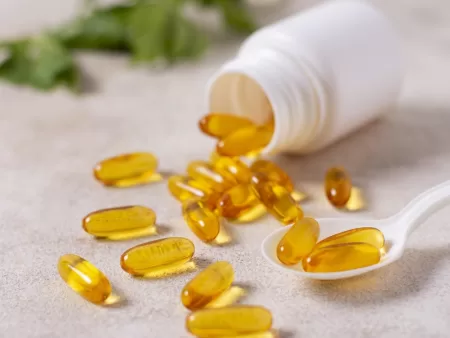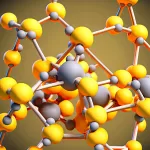Immerse yourself in the realm of TRT, a medical intervention designated to eliminate low testosterone levels. This article investigates the basics of TRT, its potential advantages, and the likelihood of adverse effects. Whether you are interested in its applications or thinking about its utilization, this overview grants representation into the science behind testosterone replacement therapy.
What is Testosterone Replacement Therapy?
Testosterone replacement therapy (TRT) stands for medical intervention utilized by patients who strive to deal with low levels of testosterone in the body. As men age, testosterone levels naturally diminish, driving to a range of troubles, in particular, tiredness, declined libido, reduced muscle mass, and alterations in mood.
Furthermore, medical ailments such as hypogonadism, where the body cannot produce a sufficient quantity of testosterone, can also drive to low testosterone levels. In such cases, TRT becomes an irreplaceable treatment variant.
Signs You May Need TRT
Testosterone, a paramount hormone in women and men, plays a decisive role in miscellaneous bodily functions, in particular, muscle mass maintenance, bone density, libido, and general well-being. Although it is natural for testosterone levels to diminish with age, some people may encounter a more substantial decrease, driving to symptoms that may demand TRT. The most widespread signs you may utilize this therapy are low testosterone, erectile dysfunction, and decreased energy.
Low testosterone
Testosterone is a crucial hormone that plays a meaningful role in multifarious facets of male healthiness, in particular, bone density, libido, muscle mass, and general well-being. It is recommended to see a physician and do blood tests to guarantee you have sufficient testosterone levels. This is specifically required as men age. If the outcomes of tests demonstrate your testosterone levels have declined, your physician may suggest testosterone replacement therapy as a treatment variant.
Low energy
One evident sign that may indicate a necessity for testosterone replacement therapy is diminished energy levels. Feeling constantly tired despite getting sufficient sleep and upholding a healthy lifestyle can be an indication of low testosterone levels. Furthermore, if you detect a substantial decrease in your physical stamina and endurance, it can be connected with low testosterone levels as well.
Erectile dysfunction
Erectile dysfunction (ED) is an unpleasant trouble for numerous men, and it can be attributed to miscellaneous factors. One potential reason that should not be ignored is low testosterone levels.
If you consistently try to acquire or sustain an erection, particularly during sexual activity, it can be a manifestation of underlying hormonal imbalances, involving low testosterone levels. If traditional cures for erectile dysfunction have not been helpful, it is advised to consider testosterone replacement therapy.
Does TRT work?
The effectiveness of TRT in coping with symptoms such as tiredness, decreased muscle mass, diminished energy levels, and reduced sexual function depends on the underlying reason for low testosterone and the person’s concrete health condition. In many cases, testosterone replacement therapy indeed works. Nonetheless, it is of utmost significance to approach TRT with realistic expectations and under the guidance of a competent physician.
Causes of Low Testosterone
Low testosterone can be triggered by miscellaneous factors, ranging from natural aging to definite medical ailments. While it is normal for testosterone levels to diminish with age, abnormally low levels can drive to multifarious health troubles. This stresses the demand for pinpointing the reason for low testosterone as rapidly as possible and defining the correct treatment.
Aging
As a rule, testosterone levels can fluctuate throughout a man’s life. However, a considerable reduction frequently happens with aging.
The process starts in the brain, where the hypothalamus and pituitary gland regulate testosterone production. With age, these glands may become less effective in signaling the testes to produce testosterone, driving to a gradual decrease in hormone levels.
Injury/damage to testicles
Low testosterone levels can be explained by multifarious factors. Injury or damage to the testicles is a noteworthy contributor to this hormonal imbalance. Injuries to the testicles can emerge due to diverse reasons, in particular, sports-related accidents, direct trauma, or surgical interventions. It is paramount to mention that the severity of testosterone decrease resulting from testicular injury can vary, and not all injuries drive to long-term hormonal imbalances.
Pituitary disorders
Pituitary disorders are regarded as one of the reasons for low testosterone levels. The pituitary gland, frequently named the “master gland,” plays a decisive role in regulating hormonal balance throughout the body.
Placed at the base of the brain, the pituitary gland releases hormones that control multifarious endocrine glands, involving the testes, which produce testosterone. Any dysfunction in the pituitary gland can disturb the delicate hormonal balance, driving to insufficient stimulation of the testes and, hence, diminished testosterone production.
Medications or treatments
Furthermore, remedies or treatments are among the potential contributors to low testosterone. In particular, opioid-based pain remedies, such as morphine, oxycodone, and hydrocodone, have been connected with diminished testosterone levels. Corticosteroids, frequently prescribed for ailments like asthma, arthritis, and autoimmune disorders, can influence testosterone production as well.
In addition, cancer treatments such as chemotherapy and radiation therapy can have negative effects on testosterone production. Remedies that block the effects of androgens, such as spironolactone, which is employed for definite conditions, in particular, acne and hirsutism, can indirectly promote low testosterone levels.
Methods of TRT
Testosterone replacement therapy is an indispensable medical intervention directed at repairing optimal levels of testosterone in individuals encountering deficiencies. There are a few methods of administering TRT, each with its own pluses and feasible risks.
Some of the most widespread methods comprise injections, gels and patches, implants, and oral forms. The selection of the method depends on definite factors, in particular, the patient’s preferences, the harshness of testosterone insufficiency, and others.
Injections
One of the primary methods of administering TRT is through injections. Injections are a widespread and effective means of supplying exogenous testosterone to recover hormonal balance and facilitate signs connected with low testosterone levels.
Injections ensure a consistent and controlled release of testosterone, assisting in sustaining stable hormone levels. Regular monitoring of testosterone levels is paramount to make sure that the prescribed dosage is upholding hormonal balance.
Gels and patches
Gels and patches are other widespread variants for administering testosterone replacement therapy. Both methods are directed to supplement the body with the testosterone it lacks, but they are different in terms of application, absorption, and convenience.
Testosterone gels represent topical formulations applied directly to the skin. Testosterone patches are placed on clean and dry skin, frequently on the back, abdomen, or upper arms.
Gels are relatively straightforward to apply and are regarded as convenient for numerous individuals. Patches are unnoticeable and do not demand daily application, which can be attractive to individuals searching for a low-maintenance TRT variant.
Implants
Among the miscellaneous methods employed in TRT, one substantial approach supposes the utilization of testosterone implants. These implants ensure a long-lasting and controlled release of testosterone, granting a handy alternative to other administration techniques. Testosterone implants comprise tiny, subcutaneous pellets that include crystalline testosterone. These pellets are commonly inserted underneath the skin, frequently in the hip or buttock area, during outpatient procedures. Frequent monitoring of testosterone levels is paramount to make sure that the implants are granting the desired therapeutic effect.
Oral forms
Oral forms are a practical option that proposes convenience for some patients when administering testosterone replacement therapy. The most widespread oral forms of TRT comprise testosterone undecanoate (Andriol) and Methyltestosterone.
Oral TRT absorption can be inconsistent and unpredictable, driving to swings in testosterone levels. This may require more systematic dosing or careful monitoring to sustain therapeutic levels.
Potential side effects
There is no doubt that TRT can be beneficial for individuals facing hypogonadism or other testosterone-related ailments. Still, it is of utmost significance to recognize potential adverse effects connected with this treatment. It is paramount to mention that the severity and occurrence of these adverse effects can vary among individuals, and not everyone will encounter them.
The most widespread side effects of testosterone replacement therapy comprise the probability of cardiovascular troubles, polycythemia, acne and skin-related troubles, sleep apnea, mood fluctuations, irritability, emotional alterations, testicular atrophy, gynecomastia, and others.
Benefits of TRT
Testosterone replacement therapy proposes a few potential pluses for people encountering low testosterone levels. These pluses frequently overshadow the likelihood of adverse effects connected with testosterone replacement therapy. Some of the feasible advantages linked with TRT comprise raised mood and energy, reinforced muscle mass, reinforced libido and sexual function, and others.
Improved mood and energy
Among the numerous advantages connected with TRT, one significant facet is its positive influence on mood and energy levels. TRT operates by repairing testosterone levels to a healthy range, which, in turn, can have a deep influence on mood regulation. Individuals passing TRT frequently notice a drop in feelings of irritability and a general improvement in their emotional state.
Increased muscle mass
Also, a substantial boost in muscle mass is observed in those undergoing testosterone replacement therapy. This facet has grabbed significant attention, specifically in the realms of fitness, sports, and general well-being. A higher testosterone level, as promoted by TRT, can also drive to a reduction of fat mass.
Enhanced libido and sexual function
Although the pluses of testosterone replacement therapy spread across miscellaneous facets of healthiness, one of the standout advantages is the incredible influence it can have on reinforcing libido and sexual function. TRT solves the trouble of diminished sex drive by repairing testosterone to optimal levels, reigniting the flame of desire. Individuals passing TRT frequently inform about a restored interest in sexual activities, testifying a substantial improvement in their general quality of life.
Pricing
As with many medical treatment procedures, the pricing of testosterone replacement therapy can be different based on a few factors.
Generally, these factors are type of treatment, brands and formulations, insurance coverage, diagnostic tests, medical monitoring, compounded medications, geographical location, and others.
Summary
To conclude, testosterone replacement therapy proposes a potential solution for individuals encountering testosterone deficiency. Although it may provide usefulness, some adverse effects are still feasible. Consulting with a medical specialist is of utmost significance for reasonable decisions and personalized care.
FAQ
TRT is a widespread treatment to eliminate low testosterone levels, and it does not refer to the utilization of anabolic steroids for non-medical objectives.
TRT is an irreplaceable treatment that operates by returning your body back to a healthy range for testosterone.
Yes, testosterone replacement therapy is legal in the United States, but it demands a prescription from a licensed medical specialist
Testosterone replacement therapy is secure and effective when suggested and controlled by a competent healthcare professional.







